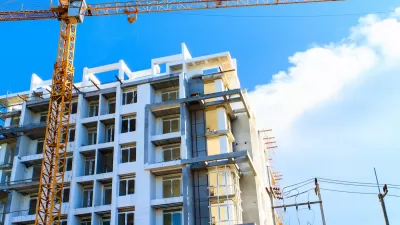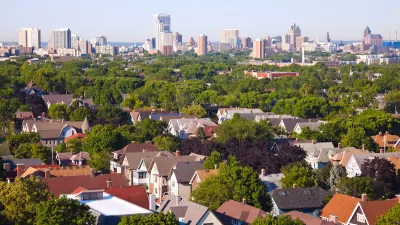The city is considering legalizing missing middle housing types and loosening other zoning regulations to encourage more housing production and density.

Writing in Streets MN, Zak Yudhishthu expresses optimism that zoning reform in St. Paul is moving in the right direction as the city moves closer to legalizing ‘missing middle housing.’
According to Yudhishthu, NIMBY fears are less powerful in the city. “There’s less fear-mongering around neighborhood character and bulldozers, leaving more room for important questions around effective policy implementation, the likely effects of policy changes and equity.”
Unlike past discussions of zoning reform in the region, such as the contentious fight over the Minneapolis 2040 plan, “there is no organized anti-change coalition, and opponents’ comments represent a small fringe of the policy discussion.” This is likely due in part to the visible—or not so visible—effects of the Minneapolis 2040 reforms, which led to only modest increases in housing and certainly didn’t cause “the end of single-family zoning,” as some critics warned.
While St. Paul zoning reforms and their details remain up in the air, Yudhishthu believes the discourse has shifted dramatically. “For decades, preservation of perceived ‘neighborhood character’ and opposition to change have defined our urban development at great cost to everyone.” Now, cities are recognizing the unsustainable rise in housing prices and the close connection to zoning and land use policy. “This enables us to focus on better implementation of more future-focused policies, opening a path to more fair, equitable and effective housing policies.”
FULL STORY: In St. Paul, Zoning Discourse Has Developed for the Better

Alabama: Trump Terminates Settlements for Black Communities Harmed By Raw Sewage
Trump deemed the landmark civil rights agreement “illegal DEI and environmental justice policy.”

Planetizen Federal Action Tracker
A weekly monitor of how Trump’s orders and actions are impacting planners and planning in America.

The 120 Year Old Tiny Home Villages That Sheltered San Francisco’s Earthquake Refugees
More than a century ago, San Francisco mobilized to house thousands of residents displaced by the 1906 earthquake. Could their strategy offer a model for the present?

Ken Jennings Launches Transit Web Series
The Jeopardy champ wants you to ride public transit.

BLM To Rescind Public Lands Rule
The change will downgrade conservation, once again putting federal land at risk for mining and other extractive uses.

Indy Neighborhood Group Builds Temporary Multi-Use Path
Community members, aided in part by funding from the city, repurposed a vehicle lane to create a protected bike and pedestrian path for the summer season.
Urban Design for Planners 1: Software Tools
This six-course series explores essential urban design concepts using open source software and equips planners with the tools they need to participate fully in the urban design process.
Planning for Universal Design
Learn the tools for implementing Universal Design in planning regulations.
Clanton & Associates, Inc.
Jessamine County Fiscal Court
Institute for Housing and Urban Development Studies (IHS)
City of Grandview
Harvard GSD Executive Education
Toledo-Lucas County Plan Commissions
Salt Lake City
NYU Wagner Graduate School of Public Service





























